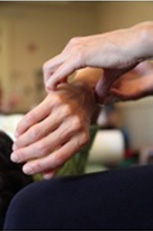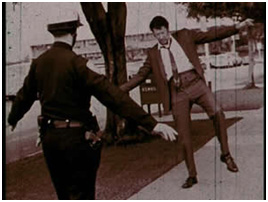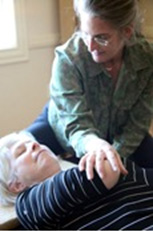 Moshe Feldenkrais, D. Sc. based his Method on the concept that human beings have an enormous capacity to learn. He observed that young children problem solve and figure how to move before they can speak. Through re-awakening the problem solving process as we move and create variations to our habitual movement patterns, we can expand our abilities – in thought as well as in action. This is an art as well as a science.
Moshe Feldenkrais, D. Sc. based his Method on the concept that human beings have an enormous capacity to learn. He observed that young children problem solve and figure how to move before they can speak. Through re-awakening the problem solving process as we move and create variations to our habitual movement patterns, we can expand our abilities – in thought as well as in action. This is an art as well as a science.
Neuroplasticity: The brain can make new connections and change an action.
“The discovery of neuroplasticity, that our thoughts can change the structure and function of our brains, even into old age, is the most important breakthrough in our understanding of the brain in four hundred years.“
Norman Doidge, The Brain That Changes Itself (2008).
“For centuries the human adult brain has been thought to be incapable of fundamental change. Now the discovery and growing awareness of neuroplasticity has revolutionized our understanding of the brain – and has opened the door to new treatments and potential cures for many diseases and disorders once thought incurable. Neuroscience is past viewing the human brain as a machine, as it once did, where, if one part breaks down or doesn’t work properly, the function it performed is permanently gone, in all cases. Indeed, in just the past few years, we’ve built on our knowledge that our brains are constantly changing their structure and function and that the adult brain is not “hard-wired” but plastic – always changing. It applies even in old age – a particularly hopeful note for an aging population like ours.”
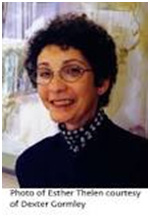 Dynamic Systems Theory
Dynamic Systems Theory
https://www.canchild.ca/en/canchildresources/dynamic_systems_theory.asp
Nature vs. Nurture Is a child’s potential fixed due to hereditary?
Can interaction with one’s environment influence development, behavior, or the structure of the brain itself?
“For years, most researchers believed that infants reached and walked when parts of the brain responsible for these activities “matured.” But based on 19 years of research, Dr. Esther Thelen, believed that these accomplishments reflect a complex interplay of factors that includes babies’ changing bodies and their external environments, as well as their growing brains and nervous systems. “Babies are constantly trying to figure out things like ‘How am I going to look around?’ and ‘How am I going to see that nice smiley face?’ “ Dr. Thelen told Indiana University’s Research & Creative Activity journal in spring 2003.
“I believe the behavior we see is not residing somewhere fixed in the brain. Instead, it emerges in the movement.” Esther Thelan, Ph.D.
10 minute video of Ester performing research
The Brain and Body Maps – Development of Self Image
Sandra Blakeslee and Matthew Blakeslee (2007)
“Each of our body parts is faithfully mapped (in the brain) based on the touch receptors embedded throughout your skin. This is your primary touch map. You also have a primary motor map, for making movements. … Your sense of individual self-hood stem from the interaction of these maps in your brain, the body in your brain, your embodied brain … All these body maps are profoundly plastic–capable of significant reorganization in response to damage, experience or practice.”
Links:
‘Body Maps’ of Babies Brains created
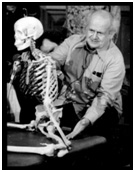 Gravity and the Skeleton: Ralph Strauch
Gravity and the Skeleton: Ralph Strauch
http://www.somatic.com/gravity.html
Proprioception and Kinesthetic Awareness:
Robots need to be taught how to sense differences in what they are holding – a full bottle versus an empty one. We have this marvelous tool (proprioceptors) embedded in our neuromuscular system. We use it in our first years of our lives to learn to move and then move to learn. When visual learning becomes dominate, we forget to learn through our kinesthetic sense and thus do not gain all the benefits we could gain if we used it to our advantage.
American Physiological Society – The Proprioceptive Senses
Metacognition
“Metacognition is, put simply, thinking about one’s thinking. More precisely, it refers to the processes used to plan, monitor, and assess one’s understanding and performance.”
https://cft.vanderbilt.edu/guides-sub-pages/metacognition/
“Learning how to learn.” “Knowing what you are doing so you can get what you want.” Both were expressions used by Moshe Feldenkrais, D. Sc. in the 80s to help students slow down and get to ‘know‘ themselves through ‘knowing’ their patterns of movement.
CURRENT RESEARCH:
Changes in neural resting state activity in primary and higher-order motor areas induced by a short sensorimotor intervention based on the Feldenkrais Method.
Discover the Art behind the Science
THE ART/THE ARTIST:
“Art is not only music, sculpture, dance or painting. To be an Artist means being a person who is interested in the quality of the thing he makes and he wants the quality to bear the hallmark of his person….Artists have the desire to grow in their personal understanding and feeling of themselves – in their personal image.” Moshe Feldenkrais D.Sc. (1980, NYC workshop)
“Psychologists as well as painters claim that they are not thinkers. Painters like to call themselves creators, doers and makers. Most of the thinking is done between their work of art. Some external force forces them to think about abstractions, for example the desire to do something ” new” or to “reject ” what is existing, is actually the aim of the visual artist or the designer. This search for something “new” is, most of the times, an “accidental” process.” From: http://www.artinarch.com/vp01.html

